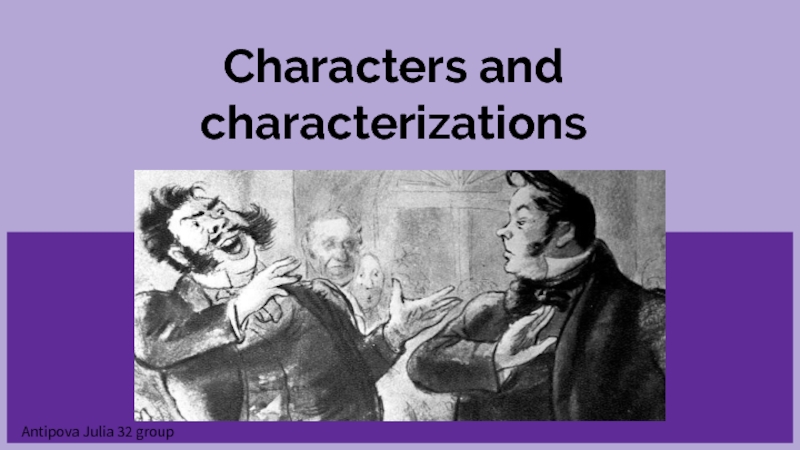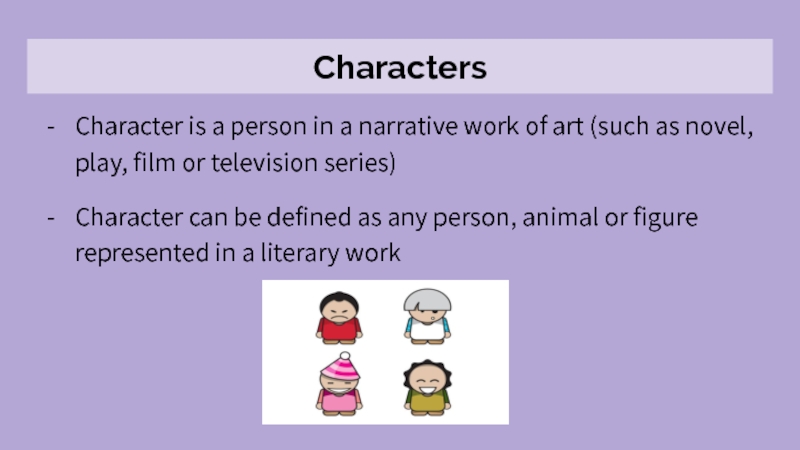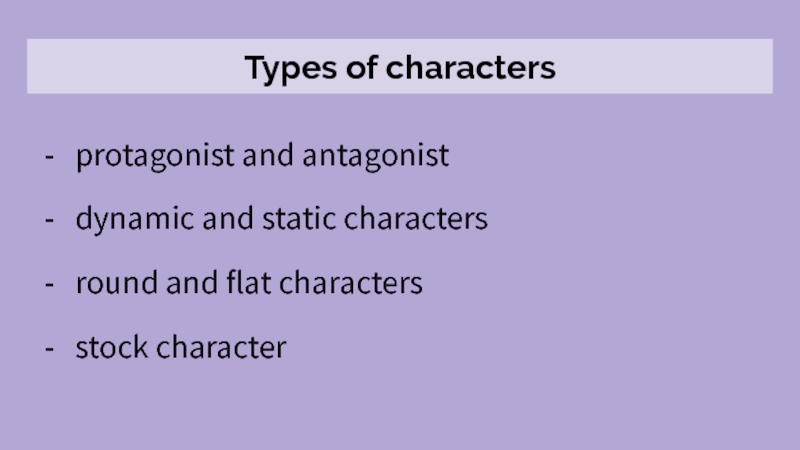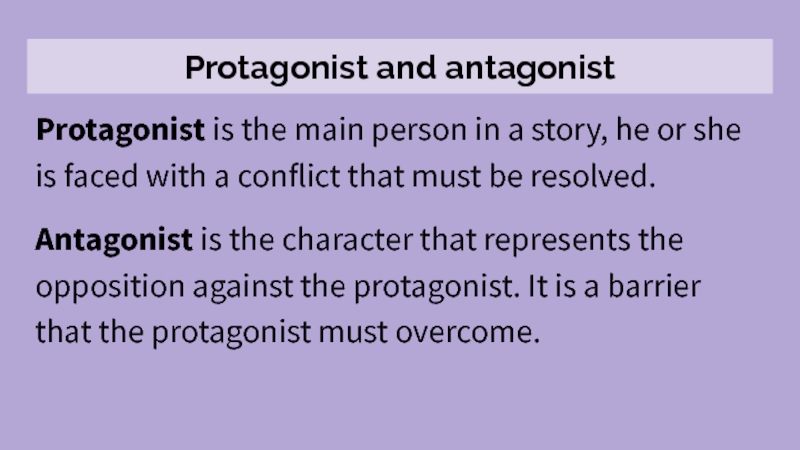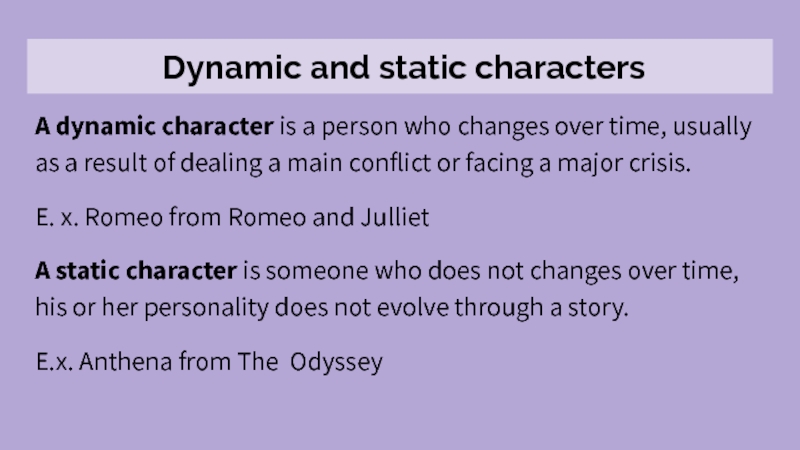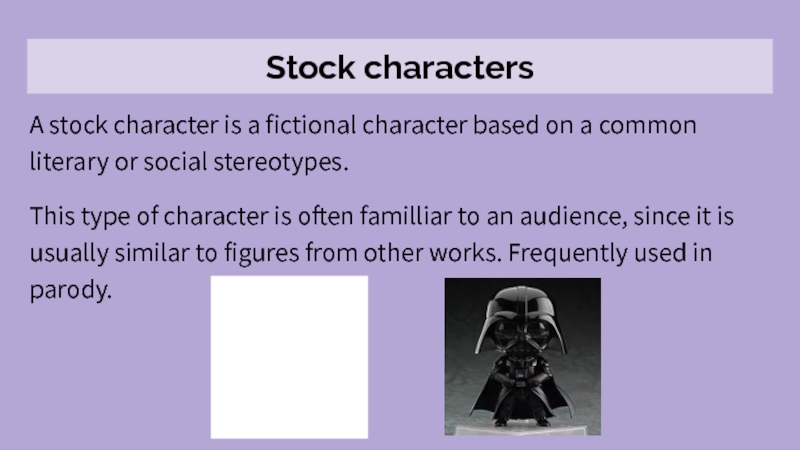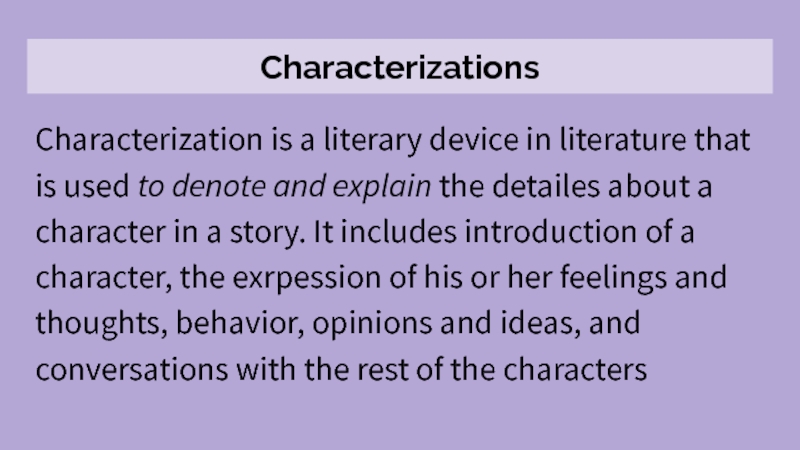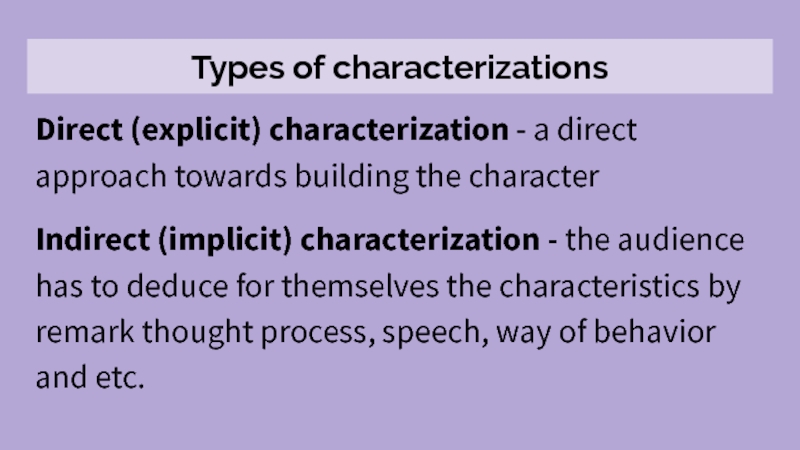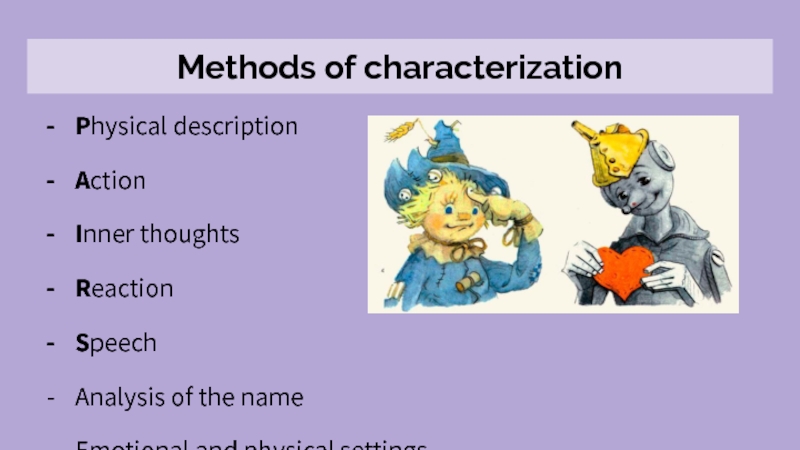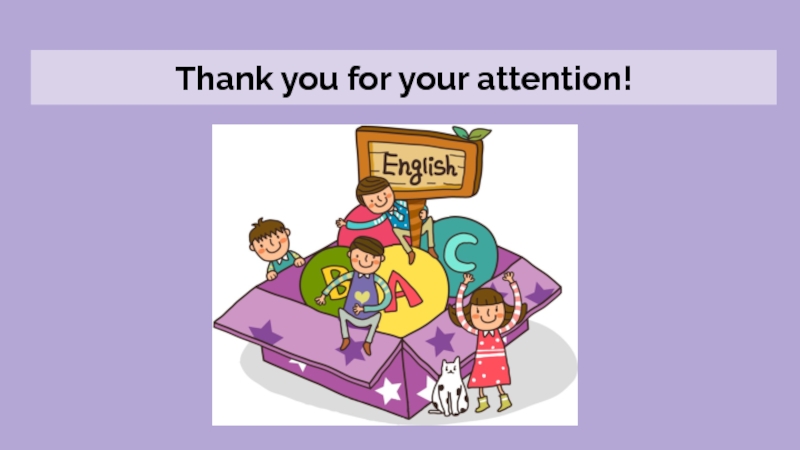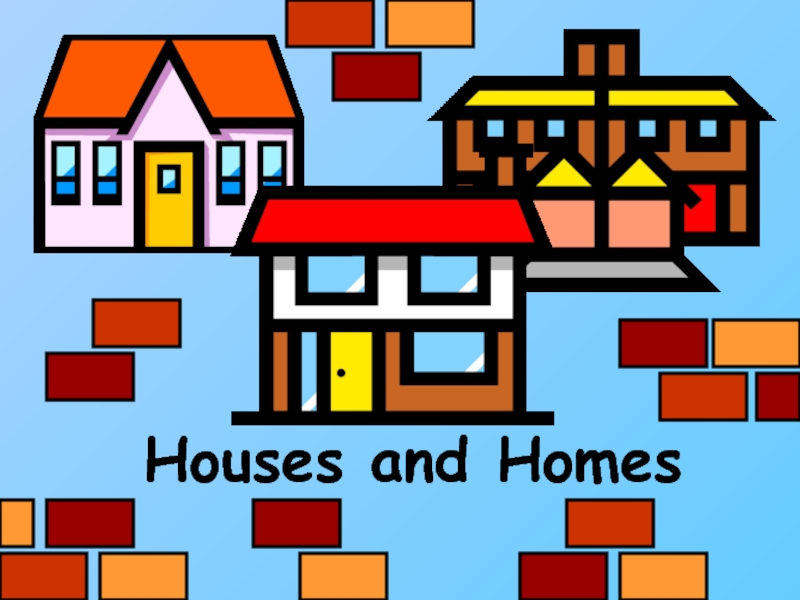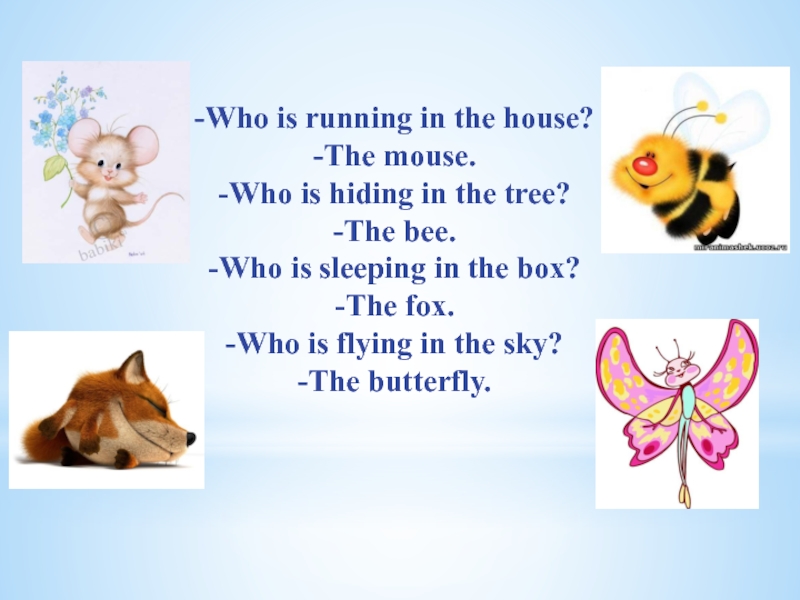- Главная
- Разное
- Дизайн
- Бизнес и предпринимательство
- Аналитика
- Образование
- Развлечения
- Красота и здоровье
- Финансы
- Государство
- Путешествия
- Спорт
- Недвижимость
- Армия
- Графика
- Культурология
- Еда и кулинария
- Лингвистика
- Английский язык
- Астрономия
- Алгебра
- Биология
- География
- Детские презентации
- Информатика
- История
- Литература
- Маркетинг
- Математика
- Медицина
- Менеджмент
- Музыка
- МХК
- Немецкий язык
- ОБЖ
- Обществознание
- Окружающий мир
- Педагогика
- Русский язык
- Технология
- Физика
- Философия
- Химия
- Шаблоны, картинки для презентаций
- Экология
- Экономика
- Юриспруденция
Characters and characterizations презентация
Содержание
- 1. Characters and characterizations
- 2. Characters Character is a person in a
- 3. Types of characters protagonist and antagonist
- 4. Protagonist and antagonist Protagonist is the main
- 5. Dynamic and static characters A dynamic
- 6. Stock characters A stock character is
- 7. Characterizations Characterization is a literary device in
- 8. Types of characterizations Direct (explicit) characterization -
- 9. Methods of characterization Physical description Action Inner
- 10. Thank you for your attention!
Слайд 2Characters
Character is a person in a narrative work of art (such
as novel, play, film or television series)
Character can be defined as any person, animal or figure represented in a literary work
Character can be defined as any person, animal or figure represented in a literary work
Слайд 3Types of characters
protagonist and antagonist
dynamic and static characters
round and flat
characters
stock character
stock character
Слайд 4Protagonist and antagonist
Protagonist is the main person in a story, he
or she is faced with a conflict that must be resolved.
Antagonist is the character that represents the opposition against the protagonist. It is a barrier that the protagonist must overcome.
Antagonist is the character that represents the opposition against the protagonist. It is a barrier that the protagonist must overcome.
Слайд 5 Dynamic and static characters
A dynamic character is a person who
changes over time, usually as a result of dealing a main conflict or facing a major crisis.
E. x. Romeo from Romeo and Julliet
A static character is someone who does not changes over time, his or her personality does not evolve through a story.
E.x. Anthena from The Odyssey
E. x. Romeo from Romeo and Julliet
A static character is someone who does not changes over time, his or her personality does not evolve through a story.
E.x. Anthena from The Odyssey
Слайд 6Stock characters
A stock character is a fictional character based on
a common literary or social stereotypes.
This type of character is often familliar to an audience, since it is usually similar to figures from other works. Frequently used in parody.
This type of character is often familliar to an audience, since it is usually similar to figures from other works. Frequently used in parody.
Слайд 7Characterizations
Characterization is a literary device in literature that is used to
denote and explain the detailes about a character in a story. It includes introduction of a character, the exrpession of his or her feelings and thoughts, behavior, opinions and ideas, and conversations with the rest of the characters
Слайд 8Types of characterizations
Direct (explicit) characterization - a direct approach towards building
the character
Indirect (implicit) characterization - the audience has to deduce for themselves the characteristics by remark thought process, speech, way of behavior and etc.
Indirect (implicit) characterization - the audience has to deduce for themselves the characteristics by remark thought process, speech, way of behavior and etc.
